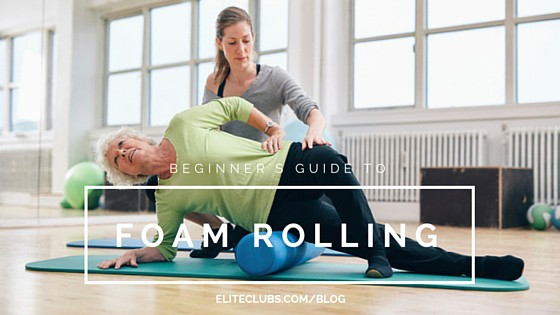
Have you seen people using foam rollers at the gym and wondered what they’re for? Here is a beginner’s guide to what foam rolling is and why you should consider adding it to your current fitness routine.
What is foam rolling?
Foam rolling, or self myofascial release (SMR), is a technique used to relieve tension from and increase blood flow to muscle tissue. Think of it as a massage, but a massage you do on yourself. Instead of using your hands or elbows or knees, you use a foam roller to work your muscles over and provide some relief for sore, aching muscles.
Why should I foam roll?
When done properly, SMR has many benefits that are similar to getting a professional massage. SMR increases blood flow to your musculature, which helps promote healing of sore muscles. It also helps improve your range of motion. When coupled with a regular stretching routine, SMR will help you to be more flexible and counteract all the sitting most people do on a regular basis.
How should I choose a foam roller?
Foam rollers come in all kinds of sizes, shapes, densities, and colors. Some of them are cylindrical and smooth, some of them have bumps and knobs. If you’re just starting out, I would recommend one that is less dense that doesn’t have knobs or ridges. Foam rolling can be uncomfortable at first, and these features will most likely exacerbate that feeling. The denser the foam roller, the less it’s going to give and the more it will push into your muscles. As you roll more, your body will loosen up and will be able to better handle more dense rollers. Colors will oftentimes indicate the density of the roller within a certain brand, but there isn’t a universal system so make sure you check each roller before you buy.
What are some tips on how to begin foam rolling?
One of the most important things to keep in mind is that foam rolling shouldn’t be painful. Despite what you may have heard from your friend who foam rolls all the time, pain is an indicator that something is wrong. It may be uncomfortable, but if it’s exceptionally painful your muscles will tense up which negates the loosening up you’re trying to achieve. Another thing to keep in mind is that you want to roll your muscles slowly and smoothly from one end of the muscle to the next, never crossing a joint. Your muscles are pliable and can take a fair amount of pressure. Your joints are less forgiving.
As always, it’s a good idea to consult a personal trainer if you’re unsure of how to go about something. A trainer will make sure you’re getting the most out of foam rolling without injuring yourself.
Get Started! Tell us about your goals!